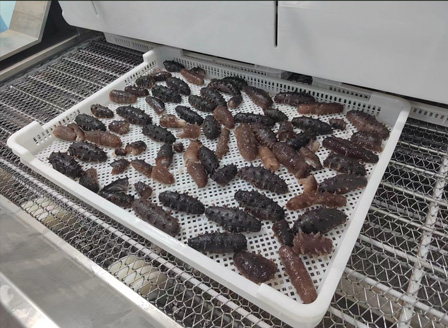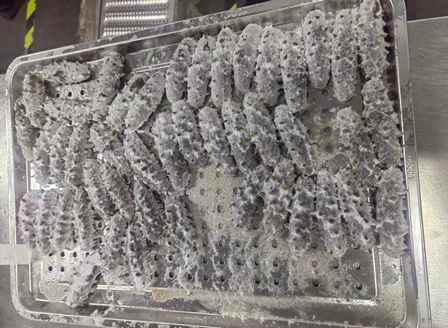Sea cucumbers are valuable in the global food market due to their rich nutrition and medicinal benefits. However, their delicate texture and fragile cell structure make freezing and preserving them challenging. Traditional freezing methods often damage the texture and cause nutrient loss, affecting overall product quality. This article looks at how liquid nitrogen tunnel freezing technology can revolutionize sea cucumber freezing, offering an efficient and sustainable solution for food processors.
Sea cucumbers have a soft texture, high water content, and gelatin, making them very susceptible to damage from ice crystals during freezing. Their high market value and strict quality requirements make preservation more complex. It is crucial to maintain their natural taste and nutrients, especially for export markets where consumers demand high-quality sea cucumbers.


A food processing plant using SPEEDCRYO® liquid nitrogen tunnel machines for sea cucumber freezing employs a fully automated solution. It can process 800 kilograms of sea cucumbers per hour, reducing freezing time to one-third of traditional methods while ensuring high quality and consistency. With smart control, the plant requires minimal staff to operate, significantly reducing labor costs.
Sea cucumbers quickly drop to -120°C during the tunnel process, freezing in just 15-20 minutes, greatly enhancing efficiency. Tests show that sea cucumbers frozen with liquid nitrogen maintain their natural color and taste after thawing, with minimal nutrient loss, resulting in high customer satisfaction.
The user interface is friendly, allowing users to easily understand and operate the equipment without specialized training.
A multi-level temperature control system enables precise control of the food temperature curve, improving food quality, optimizing refrigerant consumption, and enhancing the versatility of the equipment.
The equipment features a one-button lifting function for convenient cleaning operations.
Users can choose to use liquid nitrogen (or liquid carbon dioxide) as the cooling source, with working temperatures reaching up to -120°C. The equipment is compact, has a large capacity, and produces high-quality frozen products.
The initial cost of liquid nitrogen tunnel freezing equipment is high, especially for small to medium-sized enterprises. However, a detailed cost-benefit analysis shows multiple long-term benefits:
Increased Production Efficiency: The fast freezing speed of liquid nitrogen tunnel machines cuts processing time significantly. Compared to traditional methods, it takes only one-third of the time, allowing more batches to be processed in the same period, doubling production capacity. This reduces wait time and energy consumption.
Reduced Labor Costs: The automation design of liquid nitrogen tunnel machines simplifies the process, reducing reliance on manual labor. This lowers labor costs, especially important in today’s high labor cost environment. The efficient equipment allows one shift to do the work of two, cutting down on shift changes and management complexity.
Enhanced Brand Reputation and Market Positioning: Processors using liquid nitrogen tunnel freezing can ensure their products are positioned as high-end in the market. This technology not only extends shelf life but also greatly improves product quality, making frozen sea cucumbers more attractive to consumers. High-end markets demand strict quality, and liquid nitrogen freezing supports entry into these markets.
Increased Market Competitiveness: The widespread use of liquid nitrogen tunnel freezing changes the competitive landscape in the sea cucumber processing industry. Companies using this technology can offer efficient, stable product quality, creating a competitive edge. With growing consumer demand for high-quality frozen sea cucumbers, liquid nitrogen freezing helps businesses stay ahead in the competitive market.